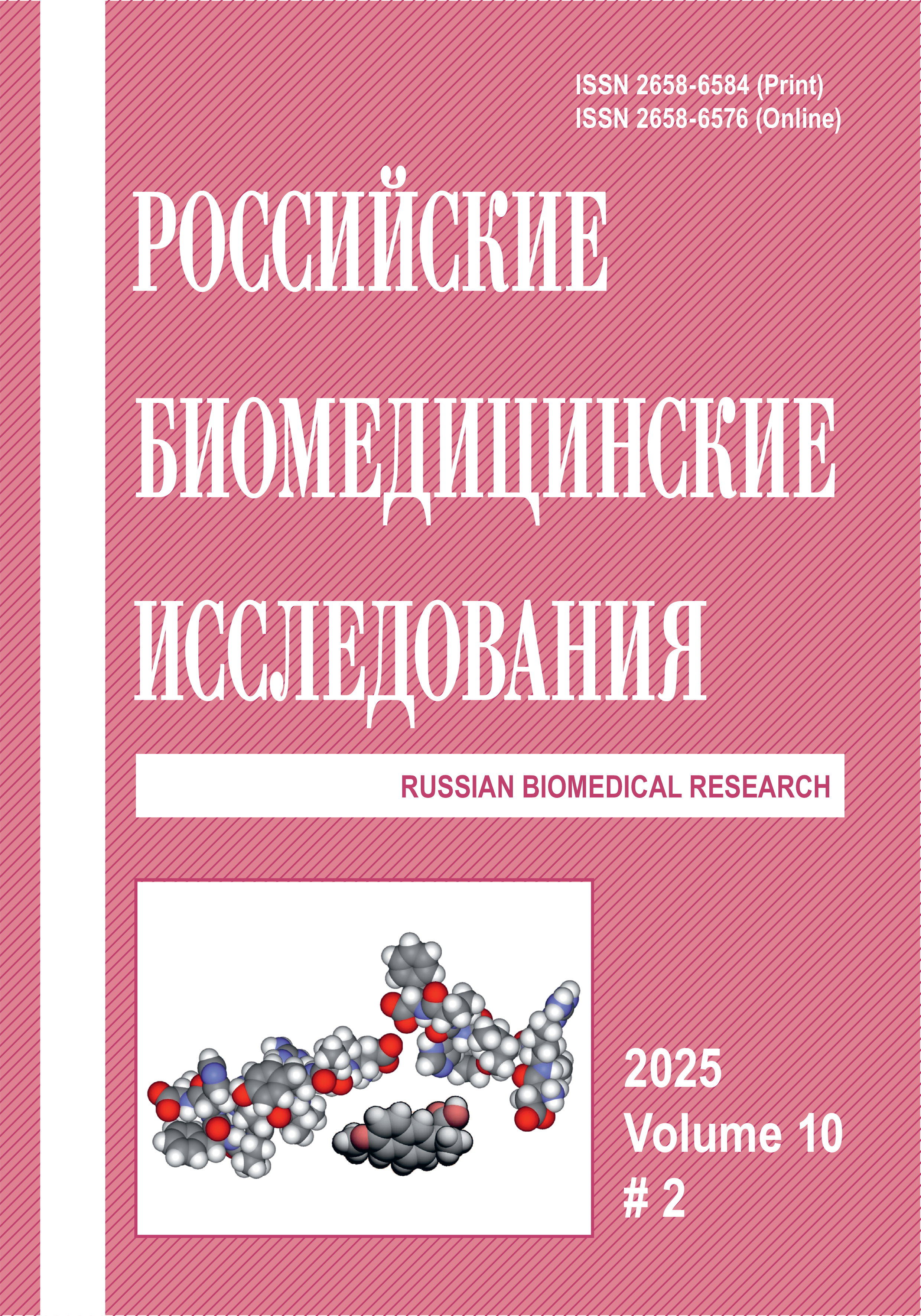FEATURES OF EXPERIMENTAL STUDIES WITH USE OF ETHANOL ON FEMALES OF CONVENTIONAL WHITE RATS
Abstract
Introduction. In fundamental medical and biological toxicological research, including the study of the effects of ethanol intoxication on living organisms, a wide variety of animals are used, such as rodents, birds, cats, dogs and even primates. The present study aimed to investigate the effects of ethanol intoxication on female outbred albino rats, with a focus on pregnancy dynamics and offspring quantity, to optimize experimental planning in ethanol-related research. Material and methods. The experiment utilized 250 conventional female albino rats and 580 newborn offspring. Throughout pregnancy, all experimental groups were provided with standard feed and a 15% ethanol solution as the sole source of fluid (administered semi-voluntarily). Statistical analyses were applied to evaluate mortality rates under semi-voluntary ethanol administration, gestational duration, and litter size. Results. The results demonstrated that ethanol exposure induced significant mortality among experimental subjects. During the first month, female mortality reached 25%; cumulative mortality over the subsequent three months did not exceed 3%, while 10% of females died during the fifth and sixth months. Additionally, ethanol exposure prolonged gestational duration from 21 days under physiological conditions to 26 days following six months of pregravid ethanol administration. A reduction in litter size was observed, decreasing from 11 to 7 newborns per litter. Conclusion. Thus, ethanol intoxication in female albino rats increases mortality, prolongs pregnancy, and reduces offspring quantity, with the severity of effects correlating with the duration of pregravid ethanol exposure. For experimental studies modeling chronic ethanol exposure, it is critical to adjust animal cohort sizes: a 30% increase in initial sample size is recommended for studies lasting up to four months, and a 40% increase for longer durations. Furthermore, experimental designs investigating antenatal ethanol effects must account for extended gestational periods (up to 26 days after six months of pregravid exposure) and diminished offspring yield.
References
Тявокина Е.Ю., Барсукова И.М. Заболеваемость алкоголизмом в России. Современные проблемы здравоохранения и медицинской статистики. 2024;1:483–495.
Александрова Г.А., Бачманов А.А., Булкина И.А. и др. Здоровье населения региона и приоритеты здравоохранения. М.: ГЭОТАР-Медиа; 2010. EDN: UKMFFR.
Зайчик А.Ш., Чурилов Л.П. Основы общей патологии. СПб.: ЭЛБИ; 2000. EDN: VPGVKL.
Сидоров П.И. (ред.), Шелыгин К.В., Кирпич И.А., Леонтьев В.Я., Соловьев А.Г. Использование лабораторных животных в токсикологическом эксперименте. Методические рекомендации. Архангельск; 2002.
Круглов С.В., Пиминова О.В., Пугач П.В., Чулочникова В.И., Чуносова Т.Н., Васильева Л.Б. Морфология тимуса потомства у самок крыс после 6 мес прегравидарной этаноловой интоксикации. Морфология. 2020;2-3(157):112–113.
Круглов С.В., Пугач П.В., Пиминова О.В., Чуносова Т.Н., Васильева Л.Б., Чулочникова В.И. Влияние длительности этаноловой интоксикации на тимус потомства самок крыс. Тенденции развития науки и образования, 2021;72-2:25–28.
Пугач П.В., Круглов С.В., Денисова Г.Н., Карелина Н.Р. Изменения в тимусе новорожденных крыс после антенатальной этаноловой интоксикации. Морфология. 2019;2(155):236–237.
Соломина А.С., Колик Л.Г., Родина А.В., Логвинов И.О., Коньков В.Г., Кудрин В.С., Антипова Т.А., Дурнев А.Д. Хроническое потребление этанола крысами перед спариванием влияет на оперативную память у потомства. Бюллетень экспериментальной биологии и медицины. 2023;5(175):568–573.
Ноздрачев А.Д., Поляков Е.Л. Анатомия крысы. СПб.: Лань; 2001.
Сапин М.Р., Никитюк Д.Б. Иммунная система, стресс и иммунодефицит. М.: Джангар; 2000.
Торбек В.Э. Морфогенез тимуса. М.: РУДН; 1995.
Lemoine P., Haronsseus H., Borteuri Y.P., Menuet Y. Les enfants de perents alcogoliques: anomalies abserves a propos de 127 cas. Quest. med. 1968;5:476–482.
Martin J.C., Smith D.W. Teratogenic effects of alcohol in humans and laboratory animals. Science. 1980;209(4454):353–361.
Пугач П.В., Круглов С.В., Карелина Н.Р. Иммуноморфологический аспект воздействия эталона. Морфология. 2010;137(4):159.
Ганапольский В.П. Система опиоидов и гормонов стресса при тяжелой механической травме и интоксикации этанолом. Дис. ... канд. мед. наук. СПб.; 2003.
Пугач П.В., Круглов С.В., Карелина Н.Р. и др. Строение тимуса и брыжеечных лимфатических узлов новорожденных крыс в результате антенатального влияния этанола. Педиатр. 2015;6(4):51–55. DOI: 10.17816/PED6451-55.
Свирин С.В., Оппедизано М.Д.Л., Артюх Л.Ю. и др. Морфофункциональные особенности строения тимуса и краниальных брыжеечных лимфатических узлов, вызванные пренатальной алкогольной интоксикацией крыс-матерей. Forcipe. 2023;6(4):4–13.
Чеботарь Н.А., Конописцева Л.А. Механизмы тератогенного действия алкоголя. Морфология. 1993;105(9-10):19–26.
Copyright (c) 2025 Russian Biomedical Research

This work is licensed under a Creative Commons Attribution 4.0 International License.



